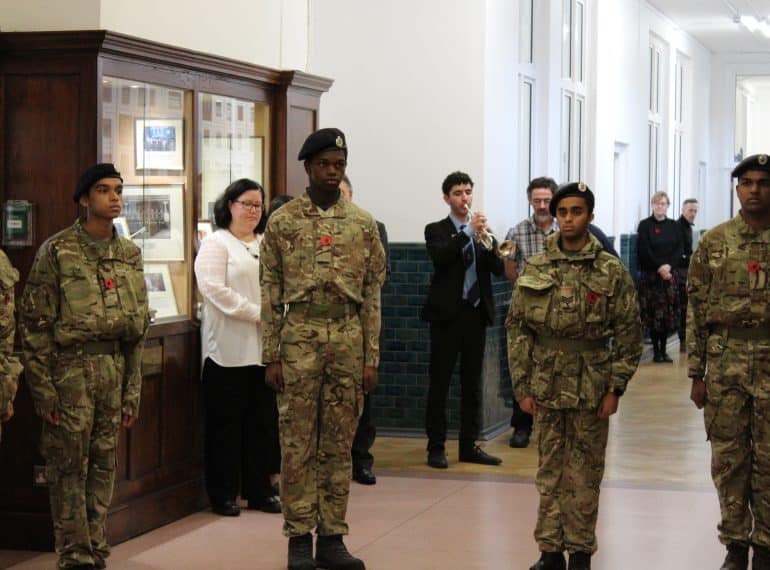
QE held its traditional act of commemoration on Armistice Day, while members of the Combined Cadet Force took part in High Barnet’s Remembrance Sunday parade.
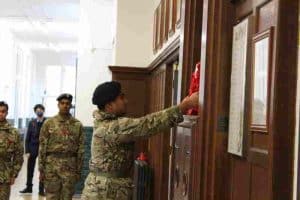 Through the two events, today’s Elizabethans remembered the 113 old boys who lost their lives in the 20th century’s two world wars and those who have been injured or died in wars since.
Through the two events, today’s Elizabethans remembered the 113 old boys who lost their lives in the 20th century’s two world wars and those who have been injured or died in wars since.
The ceremonies followed some ten days of poppy-selling within the School and a History trip during which Year 8 boys had the opportunity to see the World War I display at Hampton Court Palace, which focuses on the Indian regiment who camped there after taking part in the conflict.
Headmaster Neil Enright said: “By collectively commemorating and honouring Elizabethans of the past who have fallen in war, we recognise their ultimate sacrifice while also encouraging the present generation of pupils to reflect on the School’s tradition of service.”
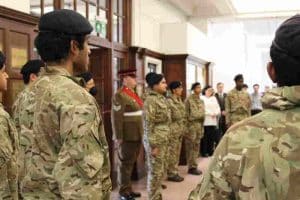 QE’s traditional 11.00am act of remembrance took place at the School’s World War I memorial in the Crush Hall. It was led by representatives of the School’s Combined Cadet Force, who were joined by Colour Sergeant Rhys Peto, the CCF’s School Staff Instructor, who is a member of QE’s Facilities Team.
QE’s traditional 11.00am act of remembrance took place at the School’s World War I memorial in the Crush Hall. It was led by representatives of the School’s Combined Cadet Force, who were joined by Colour Sergeant Rhys Peto, the CCF’s School Staff Instructor, who is a member of QE’s Facilities Team.
Wreaths were laid on behalf of the School and the Old Elizabethans, the Last Post played on the trumpet by School Captain Theo Mama-Kahn, of Year 13, and the poem, Taking a Stand*, read by Mithil Parmar, also of Year 13. There followed the national two-minute silence, which was observed around the School. Those out of earshot of the Crush Hall could watch a video featuring the Last Post which used images from the National Memorial Arboretum. At 11.02am, Theo played the reveille and the cadets fell out.
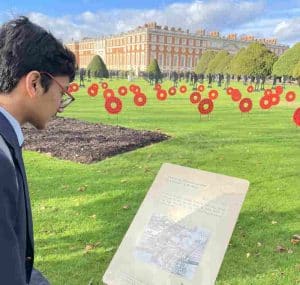 Two days later, 36 of the School’s cadets and CCF staff representatives participated in High Barnet’s Remembrance Sunday events. After assembling at Barnet Army Reserve centre in St Albans Road, they paraded down Barnet High Street and joined the church service at St John the Baptist Church, where there was the playing of the Last Post and a wreath-laying ceremony. Events concluded with a march-past, where Martin Russell, the Representative Deputy Lieutenant for the London Borough of Barnet (and the parent of an Old Elizabethan) took the salute.
Two days later, 36 of the School’s cadets and CCF staff representatives participated in High Barnet’s Remembrance Sunday events. After assembling at Barnet Army Reserve centre in St Albans Road, they paraded down Barnet High Street and joined the church service at St John the Baptist Church, where there was the playing of the Last Post and a wreath-laying ceremony. Events concluded with a march-past, where Martin Russell, the Representative Deputy Lieutenant for the London Borough of Barnet (and the parent of an Old Elizabethan) took the salute.
In the run-up to Armistice Day, pupils had visited form rooms with poppies and cash tins. For the first time, boys and staff could also make donations via contactless transaction in reception and via Parent Pay in the School Shop.
During the same week, Year 8 visited Hampton Court Palace for a history trip. In addition to exploring Tudor life at the palace, they enjoyed finding out more about the Indian soldiers who camped there for two months in the summer of 1919. They had returned to Europe by ship from Mumbai (then known as Bombay) and were brought to the UK to join in the national peace celebrations with soldiers from around the British Empire who had fought alongside each other.
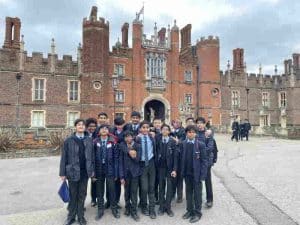 Helen Edmunds, Head of History & Politics, said: “Hampton Court provides excellent contemporary sources, including a display of diaries and letters written by the soldiers who were there just over a century ago. This links in well in with the work our pupils will do next year when they enter Year 9 on the role and importance of Empire troops during World War I and World War II.
Helen Edmunds, Head of History & Politics, said: “Hampton Court provides excellent contemporary sources, including a display of diaries and letters written by the soldiers who were there just over a century ago. This links in well in with the work our pupils will do next year when they enter Year 9 on the role and importance of Empire troops during World War I and World War II.
“We enjoyed lovely weather and, despite traffic hold-ups, we made it in time for a good visit and were able to enjoy a picnic lunch in the sunshine and a visit to the gift shop, which always goes down well!”
Year 8 made the trip over two days. With the M25 shut on one of the days because of the Just Stop Oil protests, the group instead went via the North Circular, giving the boys the opportunity to take in some extra sights along the way – Wembley Stadium, Kew Gardens and Twickenham Stadium.
* This is the poem that Mithil read:
Taking a Stand
I ask you to stand with me
For both the injured and the lost
I ask you to keep count with me
Of all the wars and what they cost
I ask you to be silent with me
Quietly grateful for our lot
As I expect you’re as thankful as me
For the health and life we’ve got
I ask that you wish them well with me
All those still risking their all
And I ask that you remember with me
The names of those that fall
I expect that you are proud like me
Of this great nation of ours too
So enjoying all its freedoms like me
Support those upholding them for you
I hope that you are hopeful like me
That we’ll soon bring an end to wars
So you’ll have to stand no more with me
And mourning families no different from yours
‘Til then be thankful you can stand with me
Thinking of those who now cannot
For standing here today with me
At least we show they’re not forgot
By John Bailey
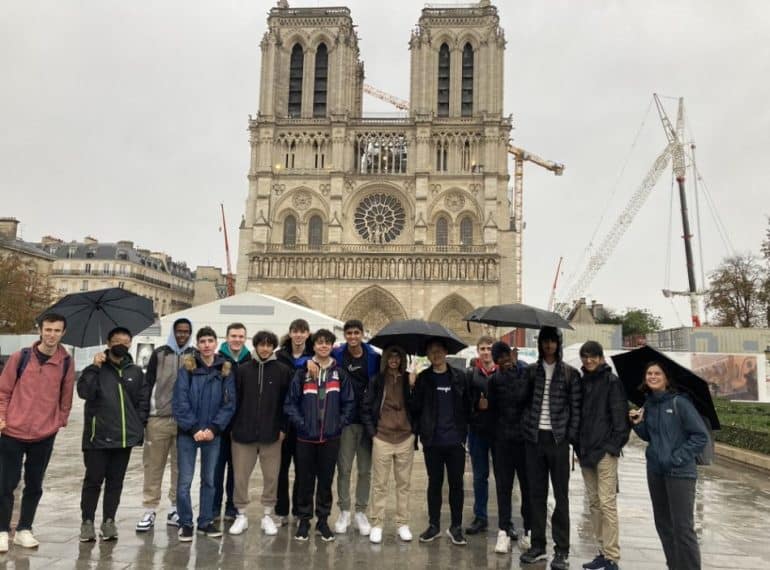
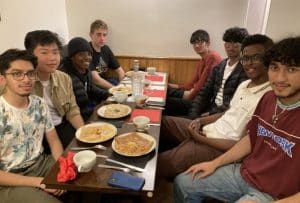 Moving around on public transport, the boys took in the sights and used local specialist guides who spoke to them in French.
Moving around on public transport, the boys took in the sights and used local specialist guides who spoke to them in French. 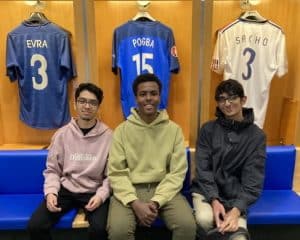 Amongst the highlights for the boys were the evening boat trip and the tour of the Stade de France. Shuaib Adam, of Year 12, said: “Seeing the Eiffel Tower in person on the first night had me in awe, let alone a cruise along the River Seine watching the Eiffel Tower light show.”
Amongst the highlights for the boys were the evening boat trip and the tour of the Stade de France. Shuaib Adam, of Year 12, said: “Seeing the Eiffel Tower in person on the first night had me in awe, let alone a cruise along the River Seine watching the Eiffel Tower light show.” 

 Through the two events, today’s Elizabethans remembered the 113 old boys who lost their lives in the 20th century’s two world wars and those who have been injured or died in wars since.
Through the two events, today’s Elizabethans remembered the 113 old boys who lost their lives in the 20th century’s two world wars and those who have been injured or died in wars since. QE’s traditional 11.00am act of remembrance took place at the School’s World War I memorial in the Crush Hall. It was led by representatives of the School’s Combined Cadet Force, who were joined by Colour Sergeant Rhys Peto, the CCF’s School Staff Instructor, who is a member of QE’s Facilities Team.
QE’s traditional 11.00am act of remembrance took place at the School’s World War I memorial in the Crush Hall. It was led by representatives of the School’s Combined Cadet Force, who were joined by Colour Sergeant Rhys Peto, the CCF’s School Staff Instructor, who is a member of QE’s Facilities Team. Two days later, 36 of the School’s cadets and CCF staff representatives participated in High Barnet’s Remembrance Sunday events. After assembling at Barnet Army Reserve centre in St Albans Road, they paraded down Barnet High Street and joined the church service at St John the Baptist Church, where there was the playing of the Last Post and a wreath-laying ceremony. Events concluded with a march-past, where Martin Russell, the Representative Deputy Lieutenant for the London Borough of Barnet (and the parent of an Old Elizabethan) took the salute.
Two days later, 36 of the School’s cadets and CCF staff representatives participated in High Barnet’s Remembrance Sunday events. After assembling at Barnet Army Reserve centre in St Albans Road, they paraded down Barnet High Street and joined the church service at St John the Baptist Church, where there was the playing of the Last Post and a wreath-laying ceremony. Events concluded with a march-past, where Martin Russell, the Representative Deputy Lieutenant for the London Borough of Barnet (and the parent of an Old Elizabethan) took the salute. Helen Edmunds, Head of History & Politics, said: “Hampton Court provides excellent contemporary sources, including a display of diaries and letters written by the soldiers who were there just over a century ago. This links in well in with the work our pupils will do next year when they enter Year 9 on the role and importance of Empire troops during World War I and World War II.
Helen Edmunds, Head of History & Politics, said: “Hampton Court provides excellent contemporary sources, including a display of diaries and letters written by the soldiers who were there just over a century ago. This links in well in with the work our pupils will do next year when they enter Year 9 on the role and importance of Empire troops during World War I and World War II.
 During the exhibition at Birmingham’s NEC, the boys networked with engineering professionals and gained insights into university and career opportunities in engineering.
During the exhibition at Birmingham’s NEC, the boys networked with engineering professionals and gained insights into university and career opportunities in engineering. The day started early, as the group set off for Birmingham amid torrential rain.
The day started early, as the group set off for Birmingham amid torrential rain. KoverTek – a UK composites distributor and coatings manufacturer
KoverTek – a UK composites distributor and coatings manufacturer They then rounded the trip off with the visit to Silverstone, near Northampton.
They then rounded the trip off with the visit to Silverstone, near Northampton.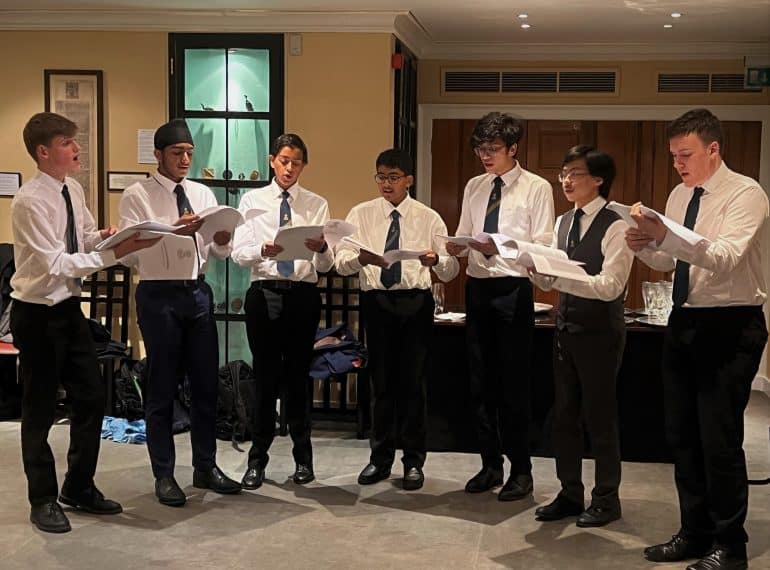
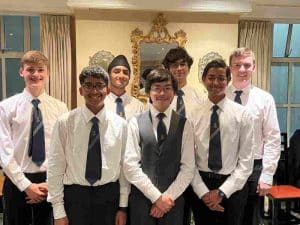 They had been invited to the 666-year-old London Livery Company’s annual dinner by its Master, Martin Russell, who is the Representative Deputy Lieutenant for the London Borough of Barnet, as well as the parent of an Old Elizabethan.
They had been invited to the 666-year-old London Livery Company’s annual dinner by its Master, Martin Russell, who is the Representative Deputy Lieutenant for the London Borough of Barnet, as well as the parent of an Old Elizabethan.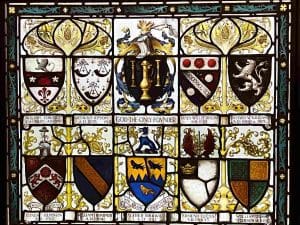 The Worshipful Company of Farriers’ Livery Dinner was held at Founders’ Hall in Cloth Fair, Barbican. This modern building – it was opened by the Lord Mayor of London in 1987 and became Grade II-listed in 2018 – is built on one of the few streets to survive the Great Fire of 1666 and is constructed of traditional materials.
The Worshipful Company of Farriers’ Livery Dinner was held at Founders’ Hall in Cloth Fair, Barbican. This modern building – it was opened by the Lord Mayor of London in 1987 and became Grade II-listed in 2018 – is built on one of the few streets to survive the Great Fire of 1666 and is constructed of traditional materials.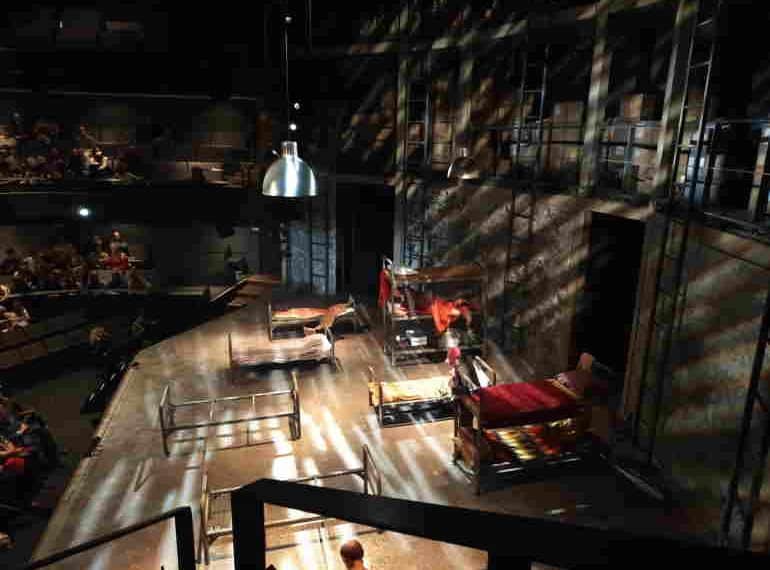
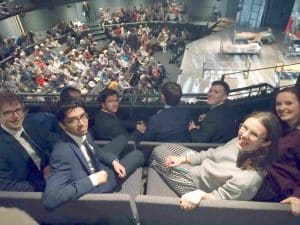 The group of Year 12 and Year 13 German students took the train to Kingston to watch The Caucasian Chalk Circle (Der kaukasische Kreidekreis) in the town’s Rose Theatre.
The group of Year 12 and Year 13 German students took the train to Kingston to watch The Caucasian Chalk Circle (Der kaukasische Kreidekreis) in the town’s Rose Theatre.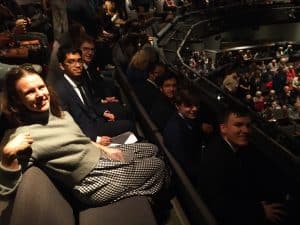 The visit reinforced the boys’ Sixth Form German studies. The Sixth Form course covers Berlin and its cultural scene. Brecht lived and worked in East Berlin for a large part of his career, although The Caucasian Chalk Circle was written in the United States, where Brecht was living in exile during the war.
The visit reinforced the boys’ Sixth Form German studies. The Sixth Form course covers Berlin and its cultural scene. Brecht lived and worked in East Berlin for a large part of his career, although The Caucasian Chalk Circle was written in the United States, where Brecht was living in exile during the war.
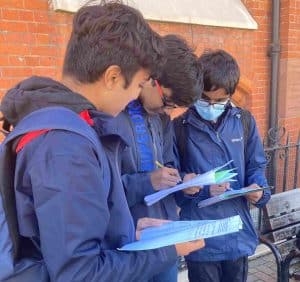 All Year 12 AS Geography students made the journey to Wandsworth for the human geography fieldtrip. They will be assessed on the fieldwork completed in their AS examinations next summer.
All Year 12 AS Geography students made the journey to Wandsworth for the human geography fieldtrip. They will be assessed on the fieldwork completed in their AS examinations next summer.